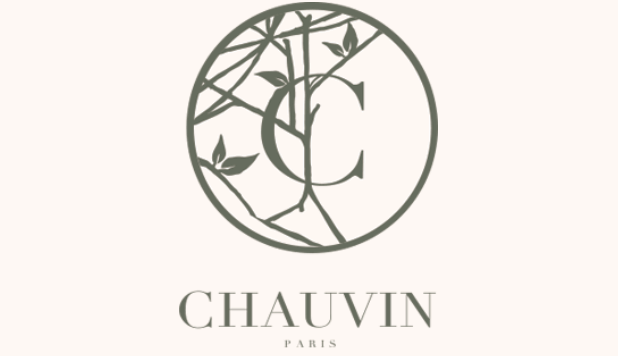Accueil » Eric Chauvin » History
Germinate
« Nature is an unwavering friend. »
« I was born at the age of 12.
Before that I have few memories…
Except perhaps those of an erased, almost immaterial kid, with a desynchronised body.
I then had to start working on my parents’ farm, responsible for the animals and the land…
Against all odds, it was the beginning of a form of appeasement.
As if I had finally found my place. «
At the age when most children are building models, Eric builds a greenhouse, and then a vegetable garden, a small and caring world, in the family farm in Maine et Loire.
Bit by bit, he discovers the tremendous power of plants, their strength and resilience…
He grows up in this ecosystem where everyone feeds off each other.
His years are like seasons.
Roots
« At school I learned to compose, not to compromise. »
At the age of 21, the young man entered La Piverdière floral art school in Angers. For 9 months, Eric blossoms. He explores the complexities of the plant world, shapes the knowledge of a pastoral childhood, learns the science and values of the florist and horticulturist professions.
While acquiring theoretical and practical knowledge, he carves out his universe, explores the simple complexity of form and the beauty of disharmony.
It is this period that Eric today says was one of the most beautiful of his life.
Grow
« Paris… »
Newly graduated, Eric leaves the Loire Valley for the first time and arrives in the capital Paris, his city-muse, the place capable of launching his extravagant ambitions into orbit.
Which is a good thing, as his are quite wild.
For several years he works in the shops of renowned florists. Daily, he learns the realities of a competitive world, the intricacies of sourcing suppliers, the stratospheric variations of the sector’s ethics, the sustainable creation, the ‘ready-to-love.
But what he discovers most of all is the human adventure, the intimacy with the clientele, the singularity of the unexpected encounters, the depth of the themes, and this extraordinary power, a mark of talent, that only a few florists possess: that of becoming an interpreter of feelings.
« For me, composing a bouquet is not a matter of chance or science, not even of taste. A composition is a sort of cross between what the customer tells me, what he doesn’t say, and my intuition. I believe that a good florist has to be both empathetic and psychological. Then each stem, each flower between my fingers finds its place naturally. It’s instinctive. » …
Flowering
« Tales don’t lie. Fairies do exist, and they are often the instruments of destiny ».
Behind the window, there is always something going on. Paris is gradually falling in love with this discreet elegance that listens and understands, with this artist who is far from passing trends but always as close as possible to your wishes. His bouquets do not dramatise nature, they are the faithful extension of it, a floral explosion of essential and immense beauty.
The young florist rubs shoulders with the new guard of art and design, and his art becomes liberated. He decorates the neo-classical staircases of private mansions with flowers, offers an opulent bucolic twist to the tables, and fills events with pure magic.
His style spreads as far as Asia.
where already Eric Chauvin becomes known as « The Little Prince of flowers”.
Bloom
« I had grown up in austerity. I now aspired to the extraordinary ».
In 2000, advised and supported by one of his fairy godmothers, Eric Chauvin opened his first boutique « Un jour de Fleurs » in the 7th arrondissement.
At a time when a generation of florists were extolling the virtues of a very formal style, the young artisan, now alone at the helm, was developing the shapes and perspectives of a new floral art.
His signature will be this flamboyant and splendid florality, modern and timeless, instinctive, never algorithmic, full of sincerity.
The young prodigy becomes the one through whom the marvellous and the unexpected happen, the florist with fantastical designs and unifying audacity. His « Un jour de Fleurs » business gradually moves aside as the creations of Eric Chauvin himself are now in demand.
« The trick to audacity is to know
how far one can go too far » .
Jean Cocteau.
Pollinate
« I believe that we reap what we know how to love ».
In 2012, Dior asked Eric Chauvin to become the production manager for its haute-couture fashion show. The idea is to transform the salons of a private mansion into a telescopic world of Lewis Caroll’s imagination. A million fresh flowers – orchids, roses, peonies, carnations – are sewn by hand onto the façades of the 5 rooms where the fashion show will take place.
Those who were present on that day still agree now that there was a before and after for floral design.
All speak of a Babylonian show, of a floral work, both masterful and modest, of that crazy aesthetic where the exuberance and modesty of the artist-florist coexist.
In the media, he has been crowned « Fleuriste de la Haute Couture » (Florist of Haute Couture).
The « Little Prince of Flowers » becomes « The Maestro ».
Flourishing
« I have become the mastermind behind endless imaginary projects with limitless possibilities. «
We now recognise the Eric Chauvin style, his seraphic silhouette and the tinkling of his heavy bracelets.
Star of the woman, Star of the man, his good stars, of great influence, watch over him. They are, among others…
Andrée, Anne, Anne-Catherine, Bethy, Christophe, Constance, Danièle, Diane, Fabienne, Françoise, Gilles, Guendalina, Isabelle, Jean-Louis, Josette, Leïla, Marysa, Maryvonne, Michel, Olivier, Patricia, Pierre, Véronique…
Eric Chauvin opens a second boutique in Neuilly, sows, harvests.
Next will be Dior in 2013, and a bluish hill of 400,000 delphiniums in the Cour Carrée of the Louvre, then the Toxic Garden show with its acidic colour chart in 2014, the wisteria arbour sheltering the loves of Andrea Casiraghi and Tatiana Santo Domingo, Eden Roc on Moscow time, Versailles in Istanbul, the 350th anniversary of Opéra Garnier which for one night became a fairy-tale world of birch trees, agapanthus, dark ivy and ferns…
There will also be the flowered moments of life, the flowers of births and bereavements, Christmas and May Day gatherings, bouquets for intimate dinners, and cocktails… Eric Chauvin becomes the floral partner of everyday life.
HARVEST,
AND SOWING IN TURN
« It’s time to make a commitment. »
From the Pitti Palace in Florence to the National Museum of Qatar in Doha, from Chennai in India to the Venetian Arsenal, from the Château de Versailles to the Eden Roc, Eric Chauvin’s designs flourish in the settings of the world’s most lauded sites.
In Perche, at the same time, Eric is building, far from the spotlight, a haven of peace. A house set in greenery and bathed in light that reflects who he is.
In the greenhouse, he decides to grow the flowers he loves, in rhythm with the seasons and without biocides, so that he can present them in his shops.
« I have returned to the roots of my calling, the horticultural profession. Damascus, Piaget, Tango, I have planted fragrant roses in my garden and I now cultivate them with respect, without pesticides, never. If I want to continue to make seasonal bouquets, I have to begin my own cultivation. I am passionate about growing my own flowers: sowing, planting, watering, and watching them grow. »

